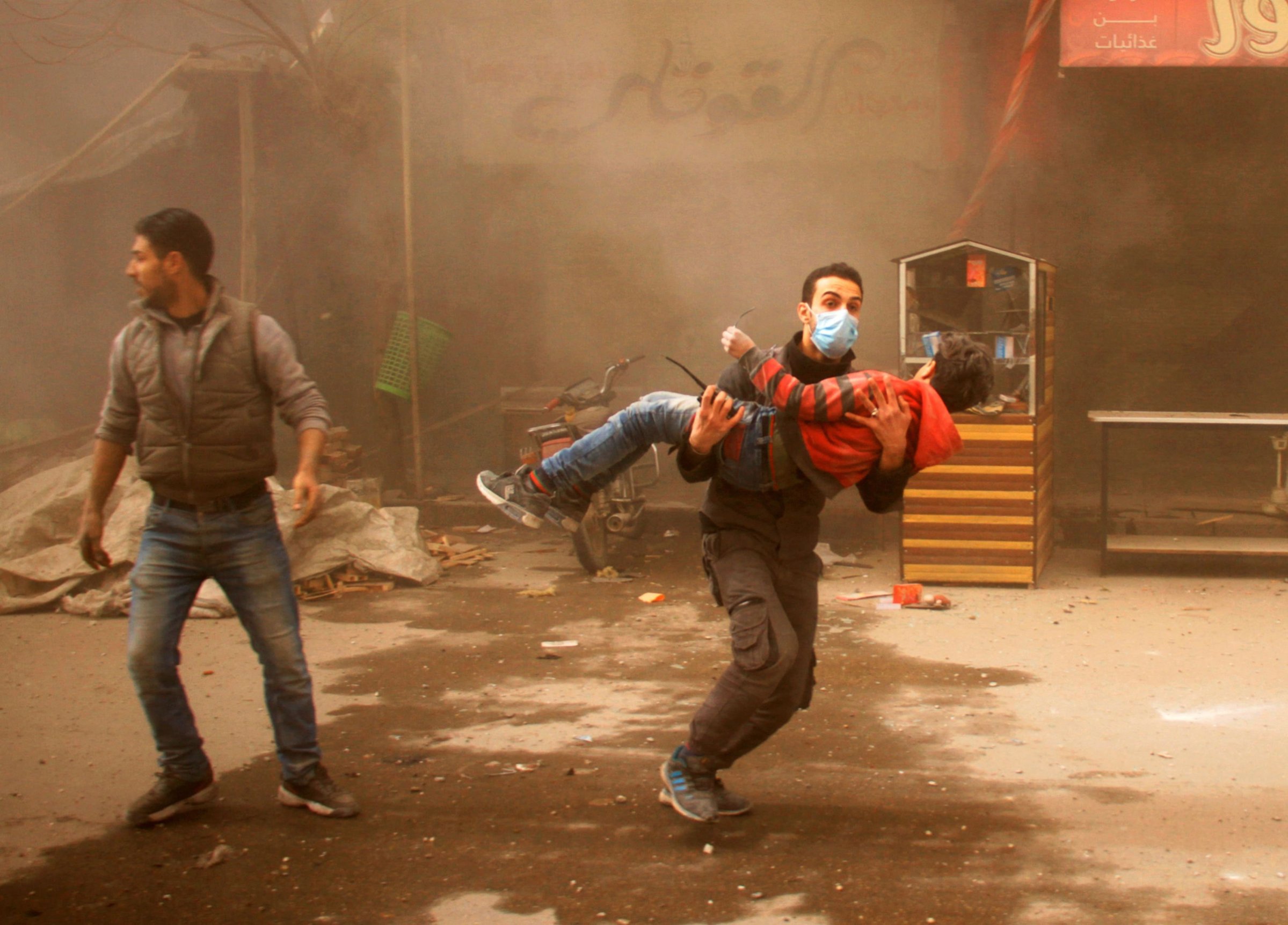
As 2018 began, it looked like the war in Syria might be drawing toward an ending that few in the international community wanted. Yes, ISIS was on the way to defeat as a conventional fighting force–but the regime of Syrian President Bashar Assad, backed by Russia and Iran, controlled more than half of the country.
Barely seven weeks later, an end to the conflict is nowhere in sight. Instead, the war in Syria is growing like a tumor–worsening in some areas and infecting surrounding states. What began as a civil uprising seven years ago now looks more like an international conflict where patron states are replacing their proxies.
Since Feb. 3, the aircraft of four different countries have been downed over Syria. A Russian jet was hit by Syrian opposition fighters. Turkey says Kurdish fighters shot down one of its helicopters. An Israeli F-16 was downed by the Syrian regime after the jet carried out raids in Syria. And Israel says it shot down an Iranian drone entering Israeli space from Syria. On top of this, U.S. forces clashed with Russian mercenary forces who had attacked Kurdish forces backed by the U.S.
This dizzying array of overlapping and competing conflicts and alliances has become unmoored from the war that began in 2011. “Most of the conflicts that you see now have nothing to do with Syria per se,” says Joost Hiltermann, director of the Middle East and North Africa program at the International Crisis Group. “They just happen to be fought there.”
With 400,000 people dead, the conflict in Syria is no longer just about the future of Assad, the Syrian people or even ISIS, which has now lost most of its territory. Instead, it’s a series of battles for geopolitical dominance.
The key player is Iran, which has extended its influence and reach inside Syria. Analysts say it now effectively holds the levers of power. “In the beginning, Iran entered Syria to support the regime of Bashar Assad, but Assad has ended up becoming a client of Iran,” says Lina Khatib, head of the Middle East and North Africa Programme at Chatham House. “The Syrian regime has become almost hostage to Iran’s interests.”
That is too much for Israel, which sees a creeping Iranian military presence on its border. It launched a series of cross-border assaults in Syria on Feb. 10 in an overt show of force. Israel has carried out occasional strikes on Syrian territory since 2011, but both sides have shied away from raising the stakes. This time, things played out differently. Syria’s anti-aircraft system hit an Israeli F-16 as it returned from a raid, sending a message: Israel will no longer have free rein of Syrian airspace.
Others in Syria are pursuing their own agendas. Turkey is battling the Kurdish YPG militia, which it sees as an existential threat. President Recep Tayyip Erdogan, who once called for Assad’s ouster, now seems resigned to his staying. “[Turkey] has only one priority left in Syria, to fight the YPG,” says Soner Cagaptay, director of the Turkish Research Program at the Washington Institute.
That presents an issue for the U.S., which helped train and arm the YPG to fight ISIS, an operation that it says is their sole mission inside Syria. Yet the Pentagon says it will keep troops on the ground despite ISIS’s being pushed to a sliver of land along the Iraqi border. The prospect of direct clashes between the U.S. and Turkey–two NATO allies–now looks worryingly real.
Amid all this, Assad and his allies are attempting to obliterate the rebel holdouts of eastern Ghouta and Idlib. The U.N. said on Feb. 6 that Syria is facing “some of the worst fighting of the entire conflict,” with reports of hundreds of civilian deaths. Its proposals for de-escalation zones have gone nowhere.
U.S. Secretary of State Rex Tillerson will be in the region until Feb. 16 to discuss issues including the conflict in Syria, but the U.S. is not the country best positioned to pull Syria back from its various fronts. That would be Russia, the sole party that has open communications with every player involved. The prospect of losing its foothold in the Middle East–and the reality of Russian citizens’ colliding with U.S.-backed forces on the battlefield–may prompt Vladimir Putin to try to rein in the situation. But at this point, it may be beyond even his means to draw out the disease.
More Must-Reads From TIME
- The 100 Most Influential People of 2024
- The Revolution of Yulia Navalnaya
- 6 Compliments That Land Every Time
- Stop Looking for Your Forever Home
- If You're Dating Right Now , You're Brave: Column
- The AI That Could Heal a Divided Internet
- Fallout Is a Brilliant Model for the Future of Video Game Adaptations
- Want Weekly Recs on What to Watch, Read, and More? Sign Up for Worth Your Time
Contact us at letters@time.com